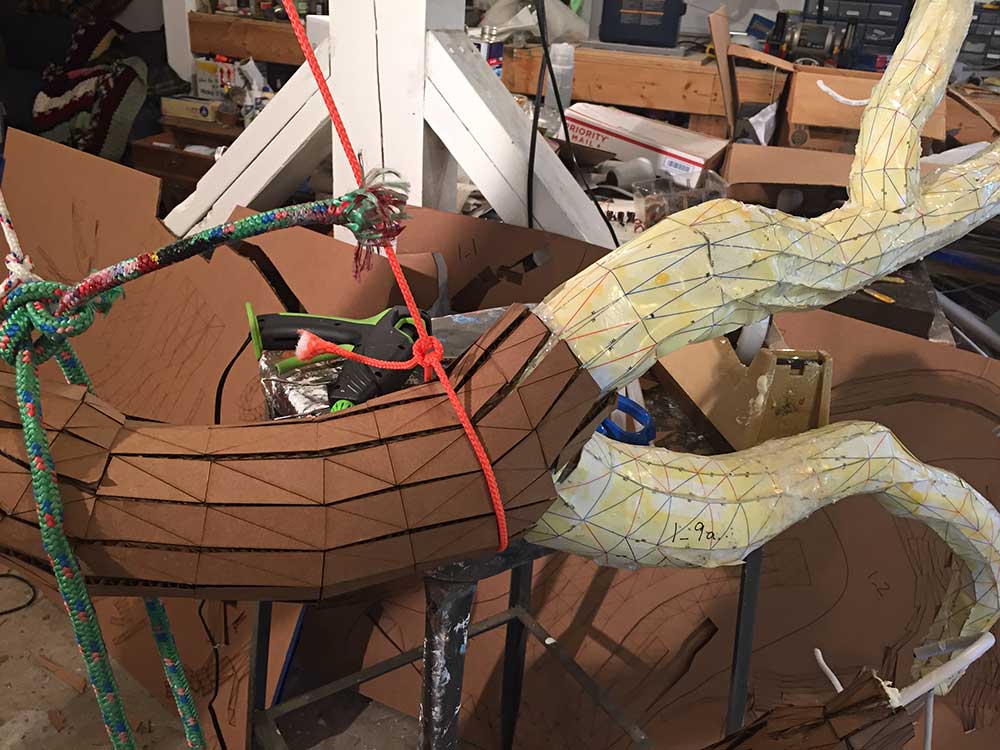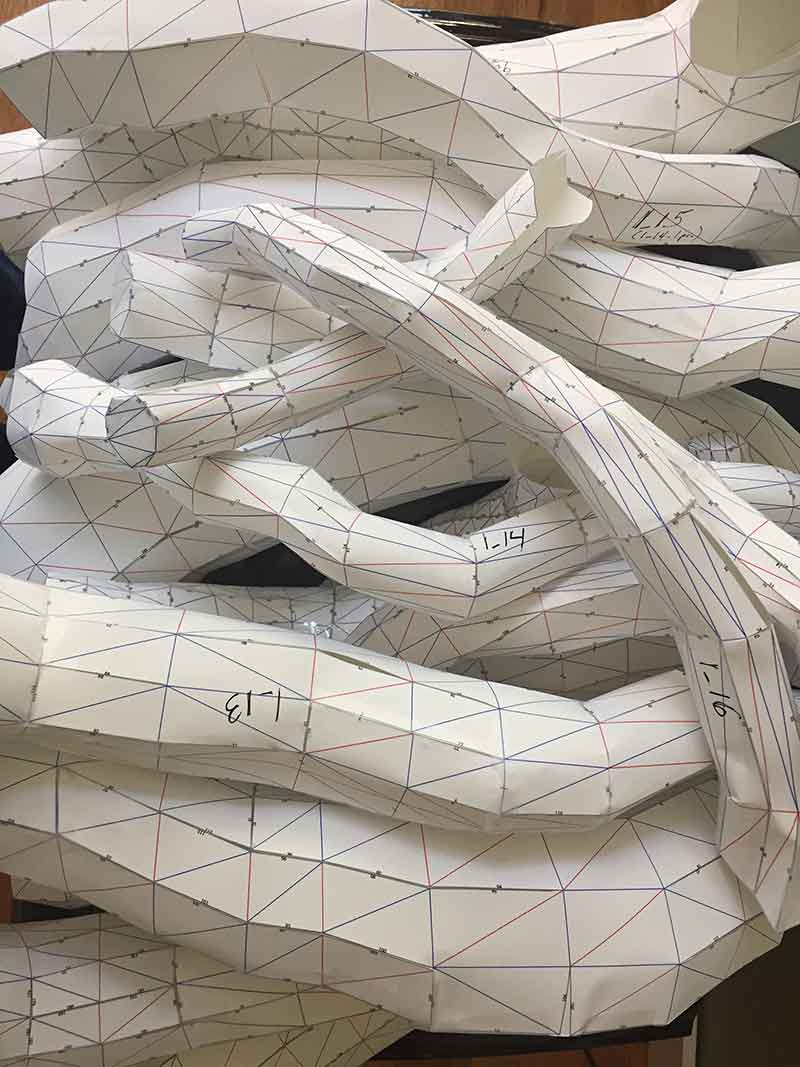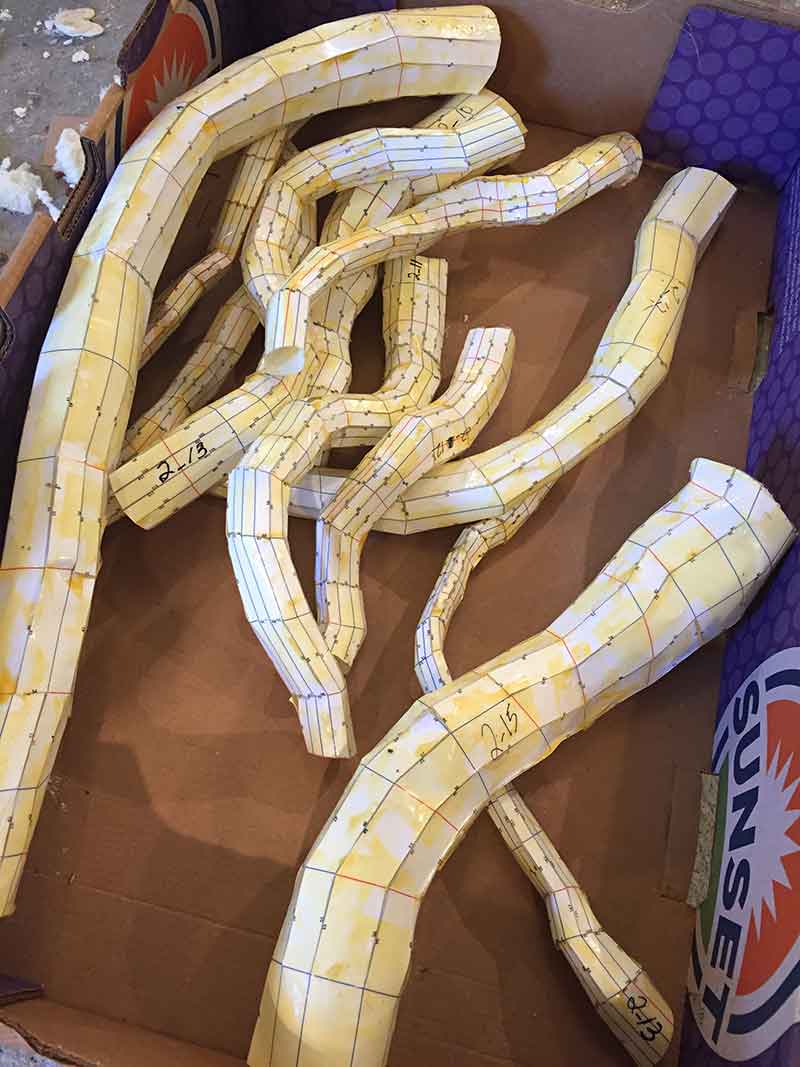Studio work in-progress, September 2018.
I’m getting ready to have arthroscopic surgery on my left hip to repair an old injury that is becoming arthritic. Meanwhile, looking at the state of my studio, it appears that I have imposed my own condition on this tree branch —a work in-progress for my latest Electrolier. Some people have commented that my approach is convoluted and I will not argue with that. However, I often find myself undertaking arduous and complex works because a big challenge yields so many little surprises, adaptations, and personal touches that don’t happen when you follow a direct path from concept to object. I am not a “special effects” artist. My art is more about the process of becoming —the struggle to achieve a difficult but worthy goal— than it is about the end result. Of course, I want the end result to be beautiful, but I strive for a beauty that is multi-layered, honest, generous, and full of stories.
Depending upon my recovery process, it may be a few weeks before I can continue with making sculpture. Meanwhile my studio is a good portrayal of my current state of being: a lot happening all at once, incomplete, in need of a good clean-up, and full of promise.


















